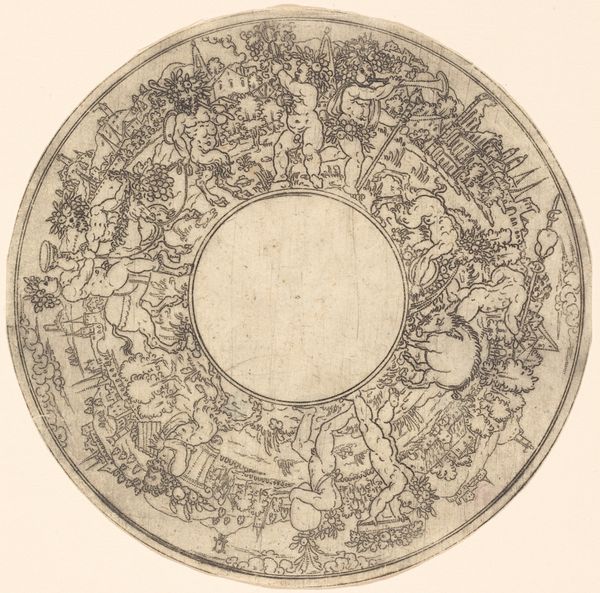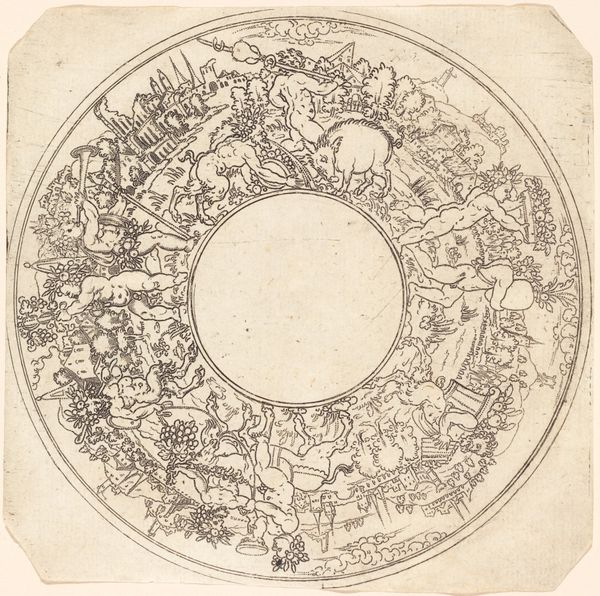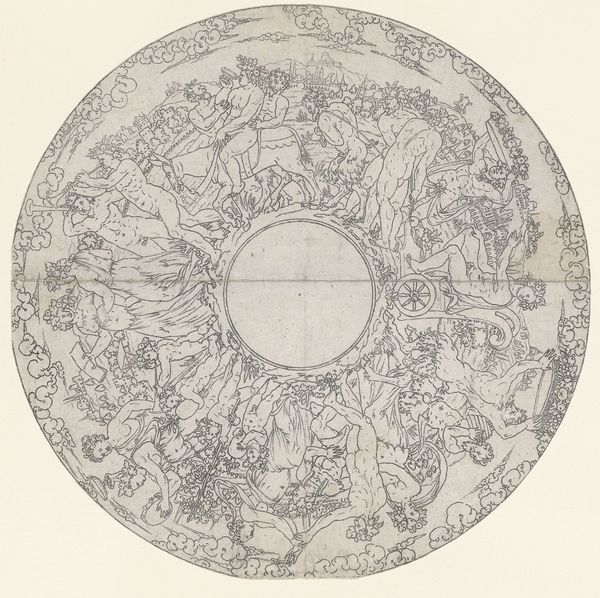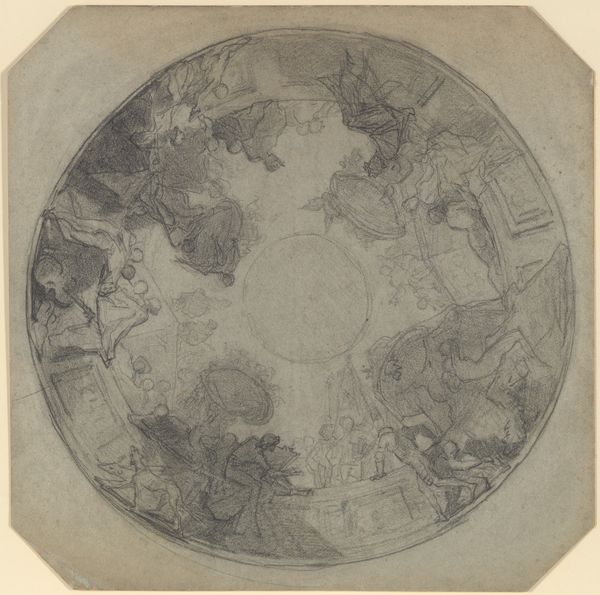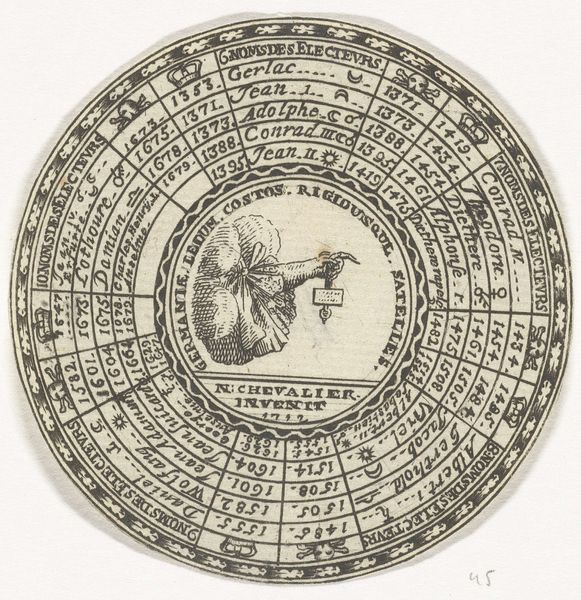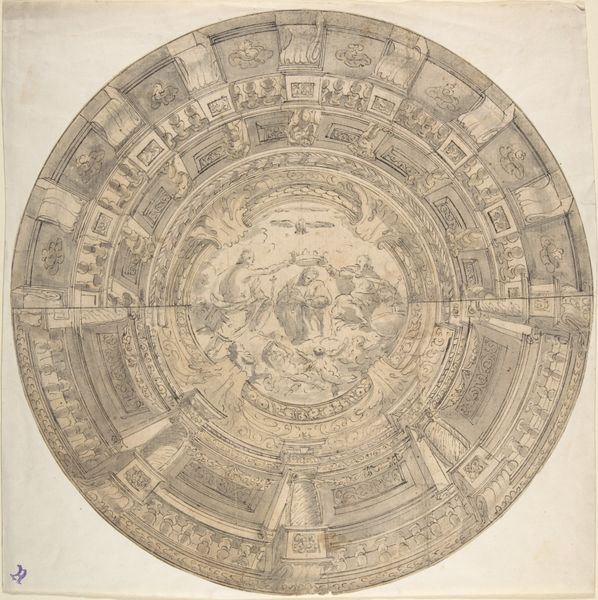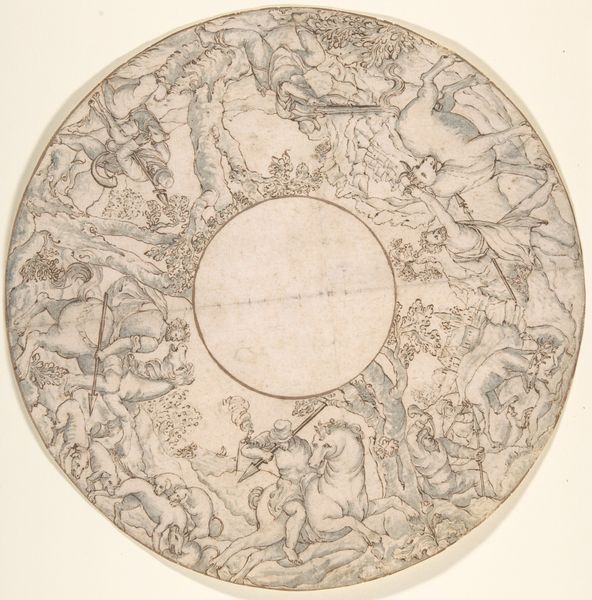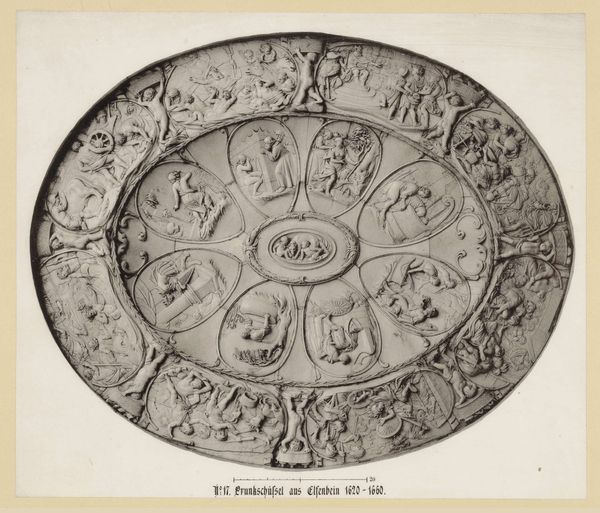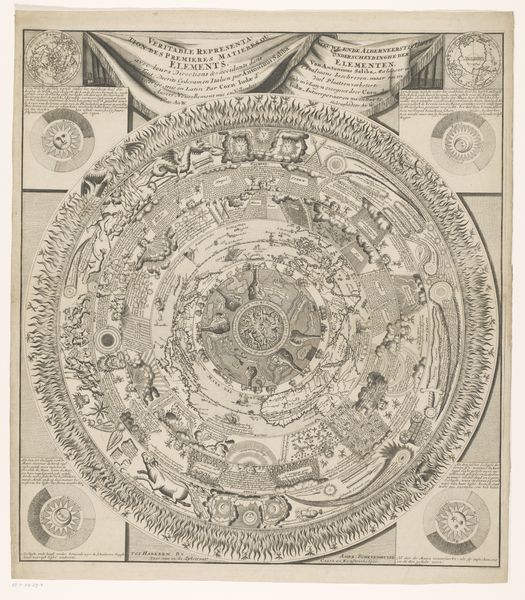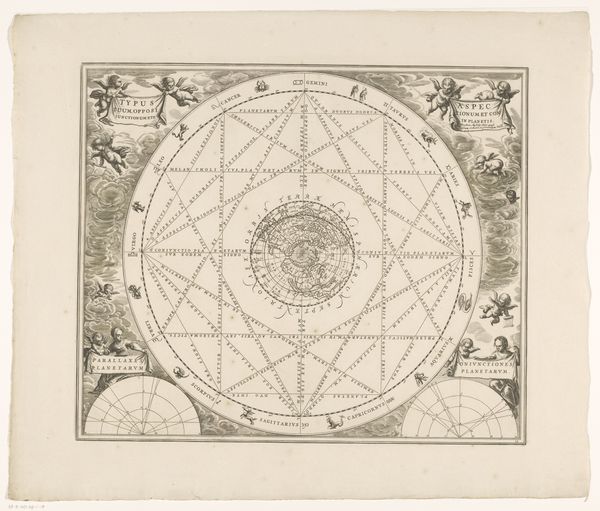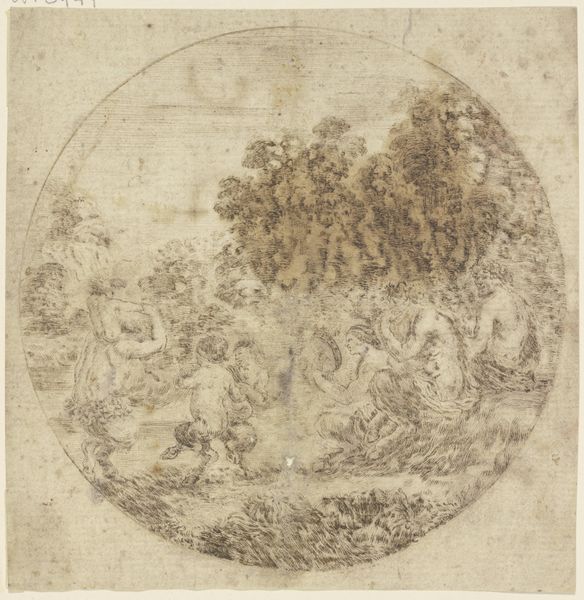
Entwurf zu einer kreisrunden Metallschüssel, mittig eine Eber- und Hirschjagd, am Rand Apoll und Daphne und drei weitere Jagdszenen
0:00
0:00
drawing, ornament, etching, ink, engraving
#
drawing
#
ornament
#
narrative-art
#
baroque
#
etching
#
landscape
#
figuration
#
ink
#
line
#
genre-painting
#
engraving
Copyright: Public Domain
Curator: At the Städel Museum, we have an intricate drawing attributed to Peter Boy the Elder. The title translates to "Design for a circular metal bowl, with a boar and stag hunt in the center, Apollo and Daphne on the edge, and three more hunting scenes." Editor: My first impression is a striking example of detailed Baroque design! It's fascinating how a flat, monochrome etching can suggest depth and such a bustling sense of movement. Curator: It’s certainly a testament to the power of line work. Beyond the aesthetic appeal, remember these designs served a purpose. Ornamental prints like this were circulated widely. Artisans could then reproduce or adapt such images into luxury goods, like the metal bowl that’s described here. Editor: So, the drawing functions as a blueprint of sorts? It brings up an interesting question about artistic hierarchies and labor. Is Boy’s work "high art," or does its function as a template for craft situate it within a different sphere of value? And how does mass reproduction change our relationship to the image? Curator: Exactly. This piece straddles a line. Its very existence speaks to the burgeoning print culture of the time and how images helped disseminate artistic ideas across geographical and social boundaries. Furthermore, the chosen subject matter of the hunt – originally the exclusive domain of the nobility – reveals interesting socio-political shifts within art’s patronage and audience. Editor: The act of hunting itself—the pursuit and domination of nature—becomes a statement about human control. That's especially clear in relation to images depicting Apollo and Daphne in smaller sections surrounding the circular image; they show a human unable to tame a spirit of nature, with life being changed as a consequence. It gives more perspective on the labor and skill behind this work's production. One has to imagine that engraving something so complicated would be grueling. Curator: It's a glimpse into the creative process of the period. Hopefully, understanding the artwork helps you see that its purpose speaks to shifts in taste, manufacturing processes, and how those processes were becoming more accessible. Editor: Indeed, considering this drawing, the medium offers insight into commerce, craft, and how artists like Peter Boy adapted their skills to meet those shifting demands. The drawing then can also reflect larger cultural trends.
Comments
No comments
Be the first to comment and join the conversation on the ultimate creative platform.

